
|   |

|   |
 e-mail: leelakaverivenkat@gmail.com Naachiyar Next - A delectable breath of fresh air Photos: Sai Sabareesh January 2, 2020 Anita Ratnam has called her work 'Naachiyar Next,' an amplification and reworked version of what she first presented in 2003 under Arangham Trust. Not having seen the earlier production, one can only comment on what was premiered as a changed version of the original, by a now more experienced choreographer, at the Krishna Gana Sabha, as elegant and refreshingly different from what one is normally treated to - amidst countless dance works woven round the theme of Nachiyar /Goda and Andal's Tiruppavai. As a strong voice of feminism over a thousand years old, Andal's appeal has not dimmed with time. Anita's lifelong fascination for Andal and what she represents has made her revisit for expression, the subject of her life and poetry over and over again- the latest being an hour and a quarter of enthralling dance theatre which communicates across regional and cultural frontiers. 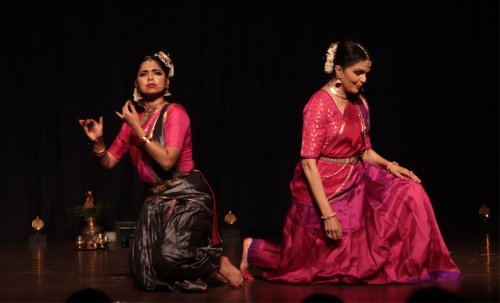 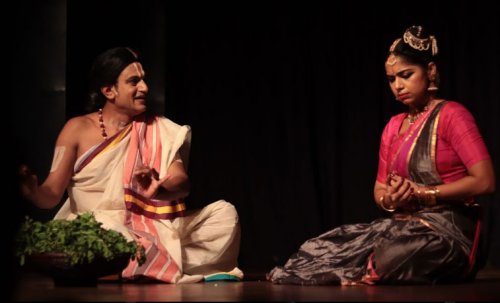 The entire enactment is on a clean and empty performance space outlined by a row, at the rear end of the stage of softly lit lamps placed at regular intervals, with even the musicians seated down in the auditorium, just in front of the audience. Singularly creative is the way the group of meticulously trained Bharatanatyam dancers Reshma, Tanya, Priya, Sruthi, Madhu, Archana and Simran create a delightful canvas of arresting visual geometry of lines and formations through strong nrittta as a moving frame, intertwined within which the central and intense love story of Goda for her beloved Krishna plays out. Presiding over stage action with supreme confidence, also becoming the central comfort figure for Goda during moments of intense emotional stress, and being the Sutradhar reciting the poetry running into smoothly flowing brief English commentaries, Anita combines several roles, with the music too effortlessly taking on from the first line sung by her. Aesthetically conceived, the sahitya includes selected lines of Tamil poetry with English explanations, as mentioned, unobtrusively flowing as a natural part of the dialogue and vocabulary of dance 'sollus' like 'tarita jham tat jham' - all melding in a way that one does not realise where one ends and the other begins. 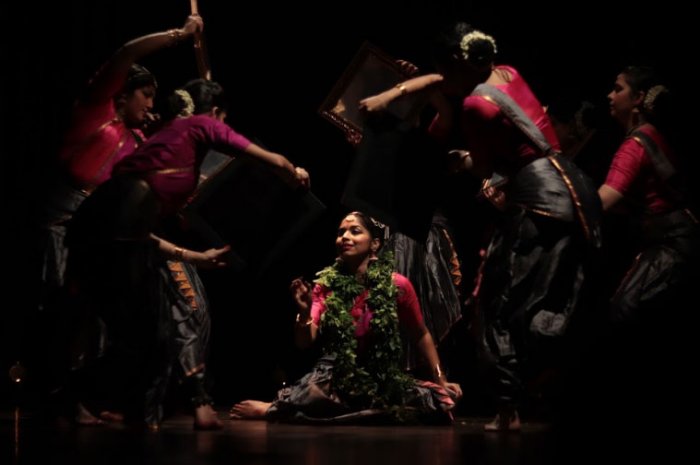 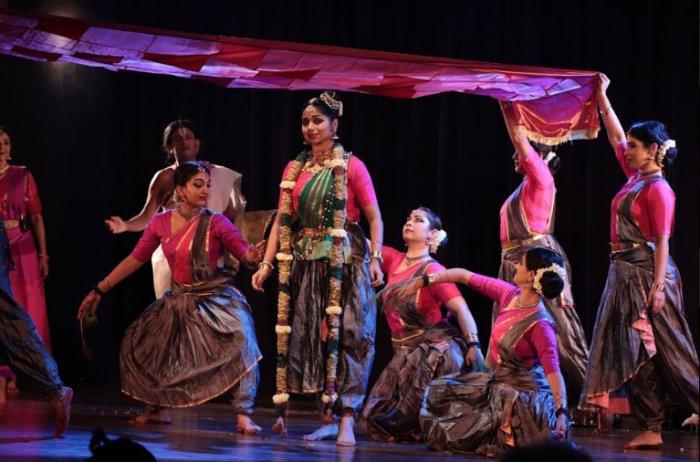 Andal's impassioned poetry and songs, expressing voluptuous yearning for Krishna, are still sung with the same fervour. The story is set in 8th century Srivilliputtur, known for its Vishnu temple where the Lord is named Vatapathrasayi. Vishnuchitta Perialwar, a pious brahmin in charge of securing flowers and garlands for the worship of the temple deity, finds in his garden, under the Tulasi plant. a baby girl he brings up with great love and joy. Amidst a sheltered orthodox community, growing up under her foster father's loving care, Goda also imbibed Perialwar's love for poetry and devotion to Vishnu, though Goda's deep devotion for Krishna was not as a playmate but as her lover. It is 'Margazhi Tingal' with Goda's own poetry waking up people from their slumber, heralding that the sun is up and the Lord of awe inspiring feats is here. Goda always nursed a great feeling of sharing a similar childhood with the Lord, in that both Krishna and she grew up under foster parentage. Select verses from poetry and from Nachiyar Tirumozhi's 143 Pasurams, have been picked by Anita to string the story of Goda, emerging as a dark, sensuous woman, feeling the stirrings of love. Addressing Nappinnai, she says, 'Will you wake up the Lord sleeping on your chest?” Uneasy and at odds with his daughter for draping round her neck a garland meant for the Lord, Perialwar is speechless when he hears the Lord's voice that he prefers the used garland. Goda wonders, “How could my father not get it? My body is only for you and ready for love.” Addressing all the creatures of nature - the parrot, the clouds, the peacock, the rains to carry her message of love to Krishna, Goda finally addresses the privileged conch, bestowed with the rare fortune of being held close to the Lord's lips. Here comes the most sensual part of Goda wanting to know from the conch how Krishna's lips taste and smell! The 'Karpooram naarumo…' verse was rendered with all the intensity. 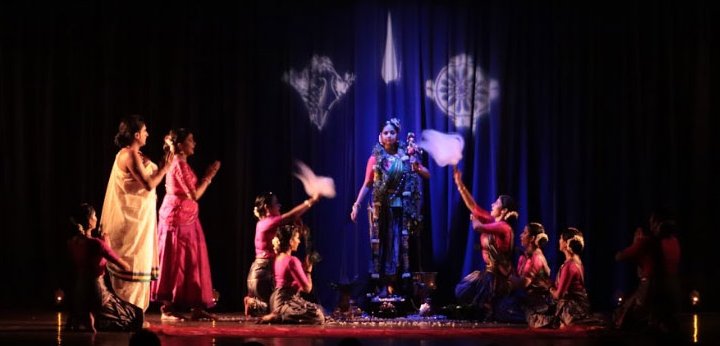 Archana Raja's highly internalised characterisation as Andal led the cast with her total immersion, her own persona disappearing in the process. As Andal in fevered pining for the Lord wasted away in insatiable hunger to become one with him, it was again Lord Ranganatha's voice declaring to the priests of the Srirangam temple to prepare to receive Goda as Andal in the temple beside him. Lore has it that Goda in a frenzy approaching the temple's sanctum disappeared in a glow of beacon light to merge with the Lord. As priest and Perialwar, Sridhar Vasudevan was a natural and Madhusudan Kalaichelwan made a very convincing Araiyar and soothsayer. Music has been contributed by OS Arun, Roshni Ganesh and drawn from several traditional sources including Ariyakudi Ramanuja Iyengar's tuning of the Tiruppavai in 1964. And last but certainly not the least, the musicians, never in your face, but quietly providing the very evocative accompaniment for movement comprised Roshni Ganesh and Randini Arvind as vocalists, Atul on the flute, NK Kesavan wielding multi-percussion, L. Subashri's nattuvangam and Anjanai on the veena.  Writing on the dance scene for the last forty years, Leela Venkataraman's incisive comments on performances of all dance forms, participation in dance discussions both in India and abroad, and as a regular contributor to Hindu Friday Review, journals like Sruti and Nartanam, makes her voice respected for its balanced critiquing. She is the author of several books like Indian Classical dance: Tradition in Transition, Classical Dance in India and Indian Classical dance: The Renaissance and Beyond. Post your comments Please provide your name and email id when you use the Anonymous profile in the blog to post a comment. All appropriate comments posted with name and email id in the blog will also be featured in the site. |